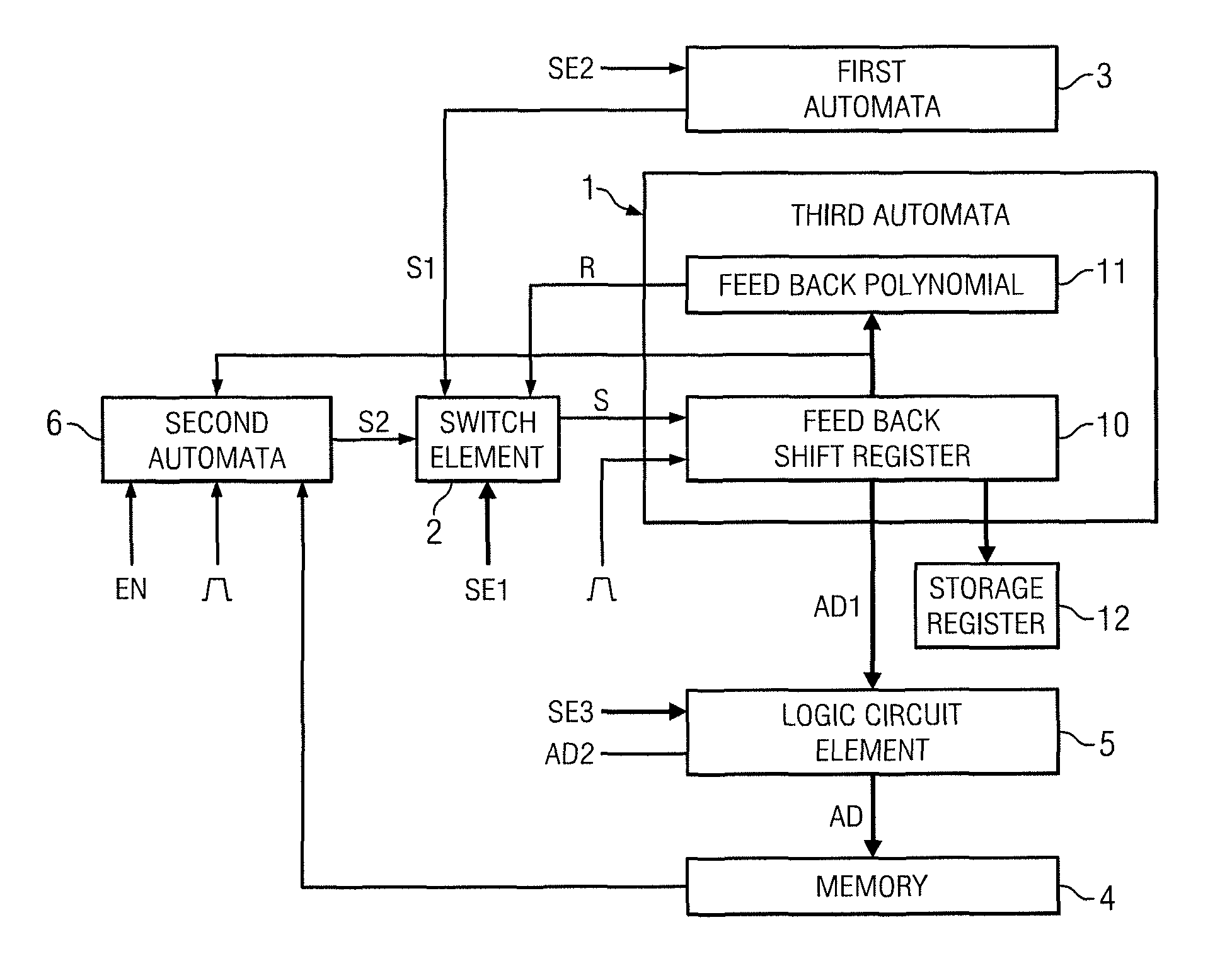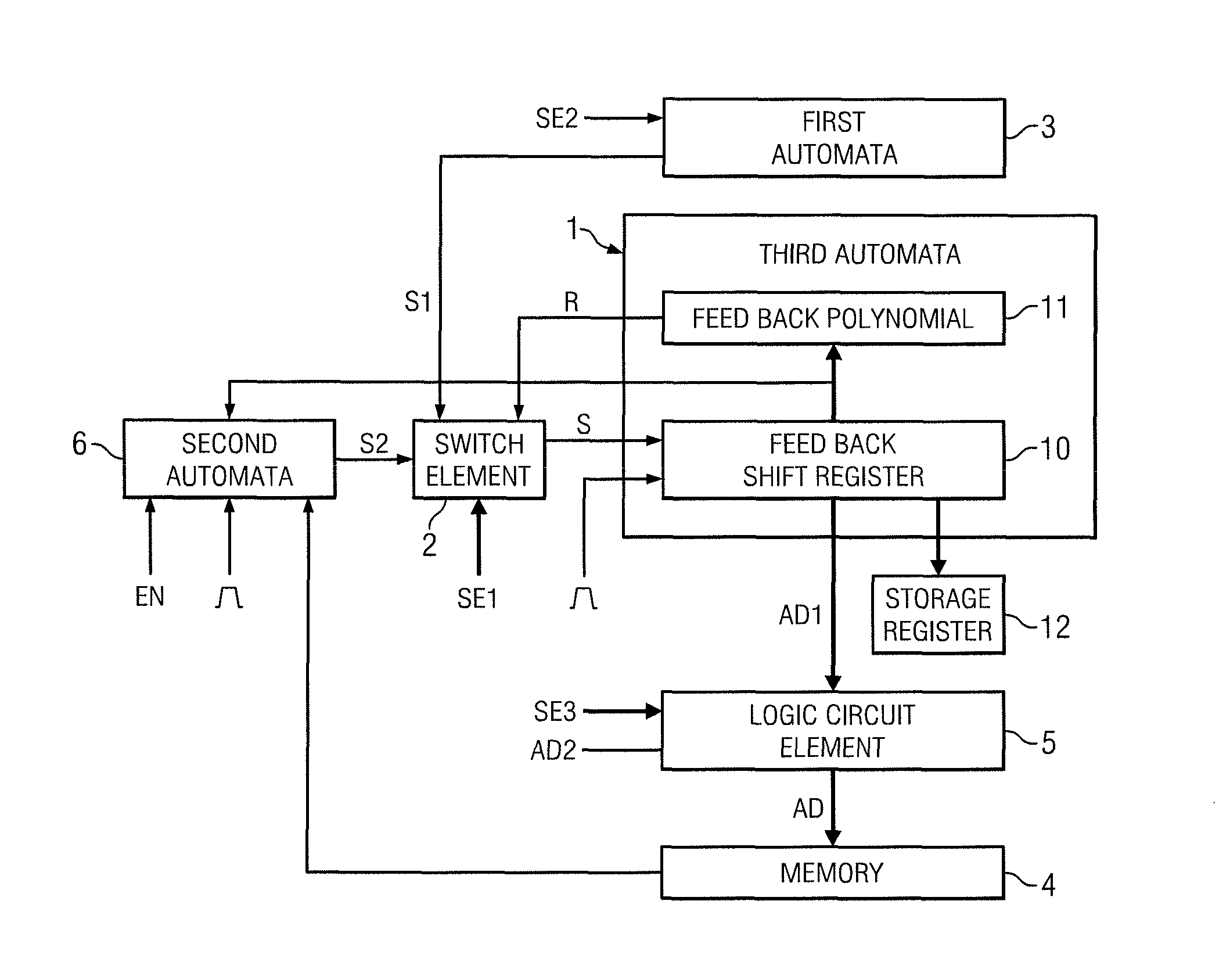Device and method for generating a random number
a technology of random number and shift register, which is applied in the field of transpon, can solve the problems of high power consumption of second oscillator with the higher frequency, long linear feedback shift register, and inability to generate random numbers in time, so as to prevent blockage of shift register and good randomization of second seed
- Summary
- Abstract
- Description
- Claims
- Application Information
AI Technical Summary
Benefits of technology
Problems solved by technology
Method used
Image
Examples
Embodiment Construction
[0037]The FIGURE schematically shows a block diagram of an inventive device for generating a random number. The central element of the device is a linear feedback shift register 1, comprised of a shift register 10 and a feedback polynomial 11. The shift register is clocked by means of an oscillator (not shown) or another clock generator. Preferably, the clock frequency is variable here.
[0038]The generated random number is stored in a storage register 12 that serves as an output register. The storage register 12 is, for example, a so-called loadable slot counter, such as is required for arbitration on a transponder. In another embodiment, a simple latch arrangement is used as the storage register 12, which is then sampled with a 1-of-n-bit multiplexer, resulting in a serial data stream. In order to limit power dissipation, a shift register for storing the random numbers is omitted in a latch arrangement.
[0039]The shift register 10 is preloaded using a seed S. The seed S is determined...
PUM
 Login to View More
Login to View More Abstract
Description
Claims
Application Information
 Login to View More
Login to View More - R&D
- Intellectual Property
- Life Sciences
- Materials
- Tech Scout
- Unparalleled Data Quality
- Higher Quality Content
- 60% Fewer Hallucinations
Browse by: Latest US Patents, China's latest patents, Technical Efficacy Thesaurus, Application Domain, Technology Topic, Popular Technical Reports.
© 2025 PatSnap. All rights reserved.Legal|Privacy policy|Modern Slavery Act Transparency Statement|Sitemap|About US| Contact US: help@patsnap.com


